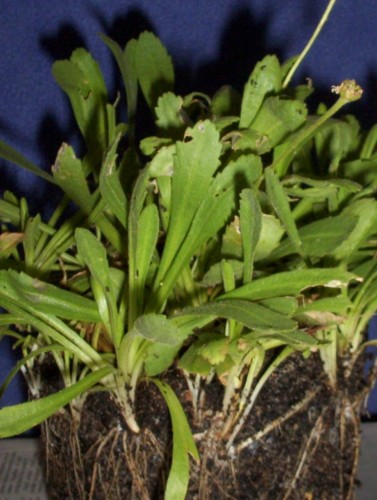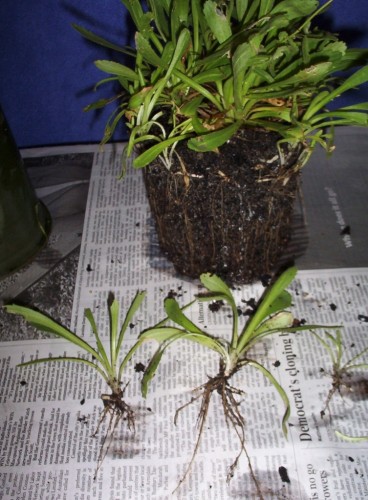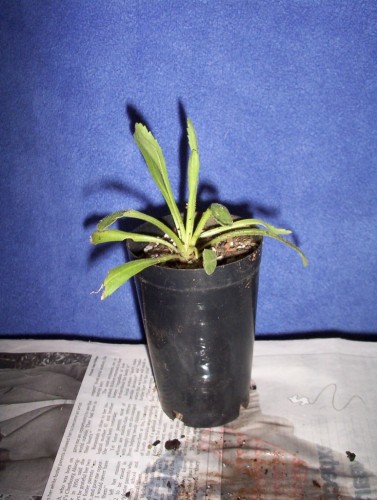Make New Plants…By Dividing What You Have
Sorting plants today, I came across some native daisies and violets and grasses which were very tight in their pots. There were multiple plants jammed in as the original plant had multiplied over the past year. The way to deal with them is to divide the pot full and repot the smaller bits or plant straight into the garden. The same applies for a clump that has got out of hand in the garden. A spade can be used to dig up a section which can be divided into smaller portions, some to replant and others to pot on to give away to appreciative folk or placed on a fund raising stall. Let the plants settle and grow on for a few weeks before doing this. Now would be a good time to divide and repot if plants are intended as Christmas gifts. The plant in the photos is a daisy Brachyscome tenuiscapa variety pubescens.
The process is simple. Gather a serrated edged knife (like an old bread knife), secateurs, pots and potting mix and something with which to label the plant. Up end the pot and remove the whole clump. Examine the root ball to see where the divisions might be made.
It is often easier to shake the potting mix from the roots so that individual small plants can be seen. Use knife or secateurs to cut between each plant, ensuring that some roots remain on each piece. If there are no roots on some good pieces place them in some propagating mix and treat as a cutting. The other pieces can be repotted or planted out.



[…] This little plant is a daisy 10-20cm high and 20-40cm wide and would make a great cottage garden plant in a shaded position during summer. It would also be good in a rockery or pot which is where I have it. I haven’t been confident about trying it in the ground. Now that I know how easily it is propagated I can try it in the ground. It is a little perennial in that it dies down during the heat of summer to reappear in autumn. It spreads rapidly by suckering and is the plant featured in the previous post. It needs root protection which can be achieved with gravel or stones or an organic mulch. […]